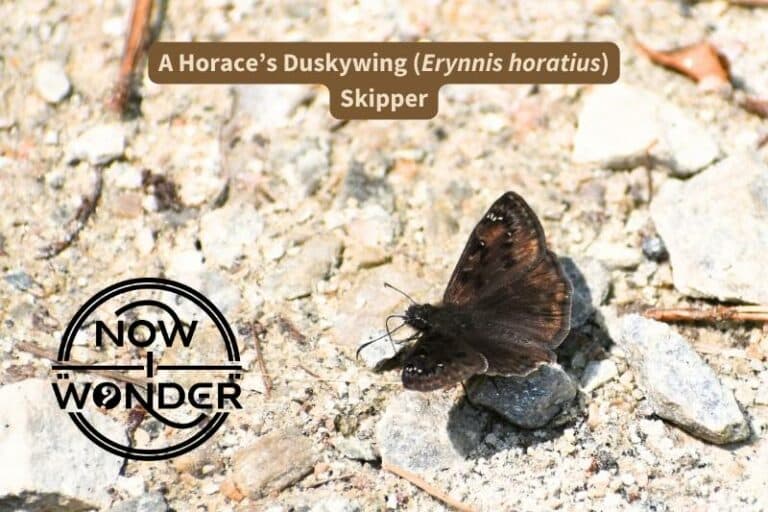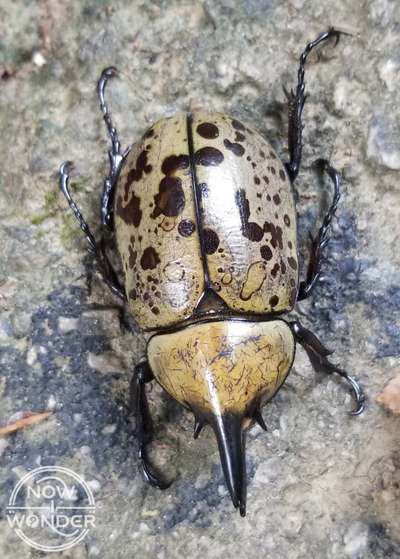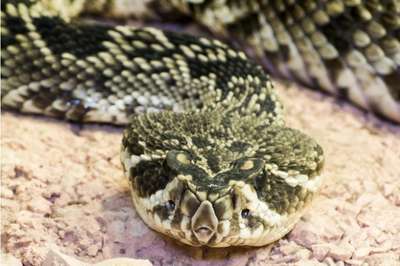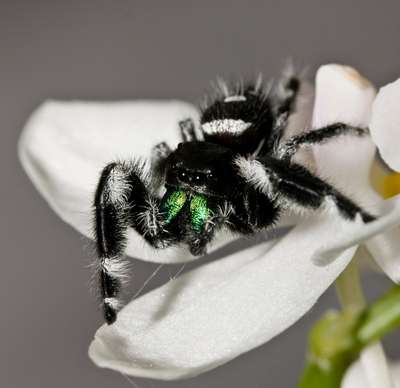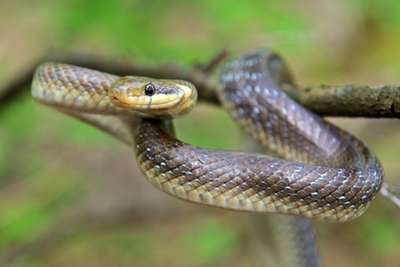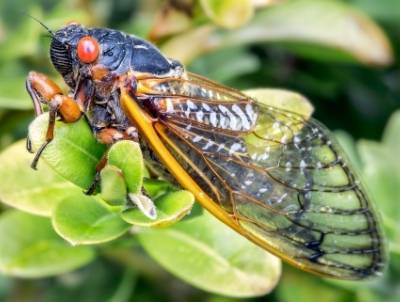Step outside before dawn or after sunset with a flashlight in most places in the United States and you will likely spot a long, grayish-brown slug with black spots and lines running down its body. If you’ve ever wondered what this creature is, what it does, and how it lives, this post will help.
The large spotted slug is Limax maximus and is commonly referred to as Leopard Slug, Great Gray Slug, Spotted Garden Slug, and Giant Garden Slug. It is classified in Kingdom Animalia, Phylum Mollusca, Class Gastropoda, Subclass Pulmonata, Order Stylommatophora, and Family Limacidae.
After a reflexive “Ewww” and shudder, you may lean in to get a closer look at the long, fleshy body; there is something fascinating about a creature so different from us. Read on to learn more about these wonderfully common land-based molluscs.
Where do Leopard Slugs live?
In the United States, Leopard Slugs (Limax maximus) live in every area except deserts, which are too dry and sparsely vegetated. By day, they hide in dark, moist areas such as under leaf litter and stones. They emerge at night to forage for food before retreating to their hiding spots around dawn.
Limax maximus is widely distributed all over the world. It is not native to United States but was introduced many years ago – probably by commercial shipping from Europe – and has spread extensively. It is now common around buildings and in home gardens.
What do Leopard Slugs look like?
Leopard Slugs have fleshy, gray bodies coated in clear slime, black spots on a distinct oval area behind their heads called the “mantle” and lengthwise stripes. Their bodies rest on a white, flexible pad of muscle called the “foot”. Their heads have two pairs of tentacles of differing lengths.
Look closely at a Leopard Slug’s body when it’s active and moving and you’ll see a hole in its side. Located near the margin where the back of the head meets the front edge of the mantle, this hole is called a “pneumostome”.
Leopard Slugs are classified in subclass Pulmonata, which are land snails that evolved to breathe through these pneumostomes; they don’t breathe through their mouths like humans do. The pneumostome brings air into the slug’s mantle, which functions as a lung.
How big are Leopard Slugs?
Leopard Slugs are an average of 15 centimeters (6 inches) long, with larger specimens reaching lengths up to 20 centimeters (approximately 8 inches). Individual size is dependent on age; younger slugs are shorter and thinner than the older adults.
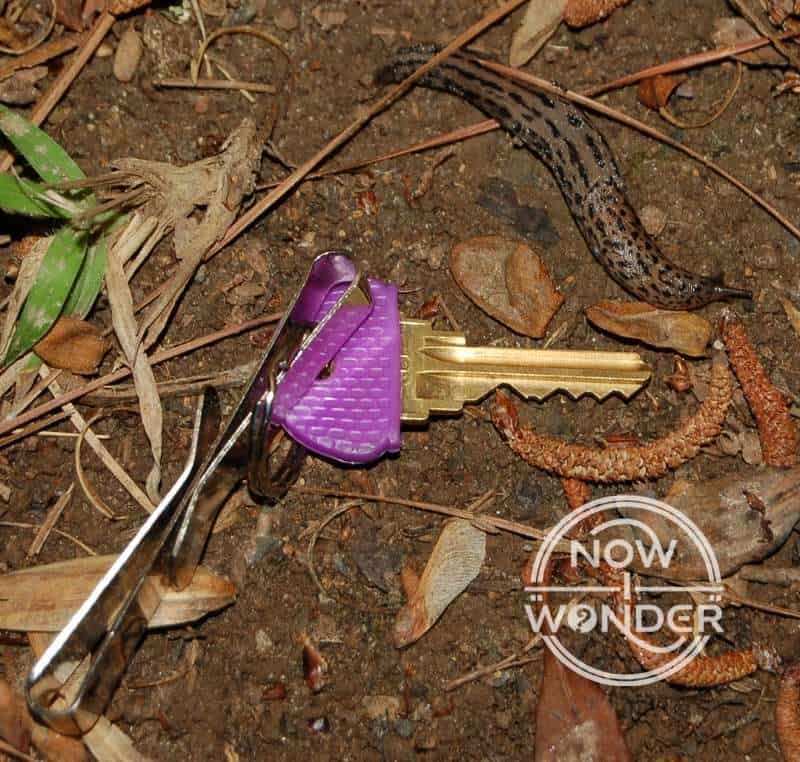
What are Leopard Slugs good for?
Leopard slugs recycle nutrients by eating decaying plant matter. They do not eat fresh plants and help protect home gardens by hunting smaller slugs and snails that do. They serve as an important prey source for a wide variety of predators and fertilize the soil after death as their bodies decay.
What eats Leopard Slugs?
The following is a list of animals that eat Leopard Slugs:
- Amphibians
- Toads
- Frogs
- Salamanders
- Reptiles
- Turtles
- Skinks
- Some lizards
- Insects
- Marsh flies (parasitize the slugs rather than consuming them at point of contact)
- Ground beetles
- Larval fireflies
- Rove beetles
- Wild birds
- Blackbirds
- American Robins
- Starlings
- Blue Jays
- Grackles
- Crows
- Other thrushes
- Turkeys
- Canadian Geese
- Domesticated birds
- Ducks
- Geese
- Chickens
- Myriapodes:
- Centipedes
- Mammals
- Shrews
- Moles
- Opossums
How long do Leopard Slugs live?
If not eaten by predators, Leopard Slugs can live 2-3 years. In favorable weather, slugs may be active all year. During dry conditions, slugs will “aestivate” or reduce their metabolisms, plug their breathing pores with mucus and rest in their hiding places until wetter conditions develop.
What does a Leopard Slug do all day?
Leopard Slugs are nocturnal so hide during the day. They emerge after sunset, when they sense the light has faded and temperatures have cooled, and spend the night foraging for food. Before dawn, they use their olfactory tentacles to smell and taste their way back to their preferred hiding place.
Leopard Slugs return to their preferred hiding spots quickly and easily every morning, no matter how far from them they travel during the night. Like all gastropods, slugs glide along a layer of slime by undulating the flexible, fleshy pad of muscle called the “foot”.
Leopard Slugs move differently depending on their activity. Slugs that are feeding on stationary foods such as algae, decaying plant matter or fungi follow circuitous, seemingly random routes across the food.
Those that are actively hunting prey course across the scent trail left by their prey. They wave their short olfactory tentacles through the air, tap them on the ground and follow the direction in which the odor is most concentrated.
Leopard Slugs that have finished feeding for the night and are traveling back to escape the light and heat of daybreak follow an unerring path straight to their lairs.
How fast can a Leopard Slug move?
Leopard Slugs can crawl up to 15 centimeters (6 inches) per minute. A Leopard Slug’s speed will depend on its activity; it moves slowly when foraging for food and eating and much faster when actively hunting live prey or returning to its lair in the predawn hours.
Slugs in general are notorious for being slow-moving; American English has words like “sluggard” and “sluggish”, which all relate to being slow, ponderous, stagnant, or lazy. But speed in the animal world is relative. Yes, a slug is slow if compared to a cockroach, squirrel or brown thrasher but that doesn’t make it slow on its own terms. Leopard Slugs in particular are surprisingly quick on their “feet”; they move faster than you might think.
Slugs can move faster either by extending the sole of the foot farther or by increasing the frequency of the muscular waves that propel them forward.
The following video shows a Leopard Slug at the foundation of a building. Moments before the video begins recording, this slug was at least a few feet above the ground, well on the building’s siding. In the time required to pull out a camera and begin recording, it traveled all the way to the ground.
Taken in the early morning hours, the slug is moving quickly and without hesitation. It covers a lot of ground and conveys a sense of purpose. This is a slug that knows exactly where its going and intends to get there as quickly as it can.
Leopard Slugs are fascinating creatures that experience life much differently than us humans and they are relatively easy to find and observe in all but the driest areas of the United States.
We may find their bodies strange, their tentacles off-putting and their slime trails revolting but organisms in nature exploit every opportunity without prejudice.
All gastropods, including Leopard Slugs, had to evolve special adaptations to survive on land. There is no doubt that they succeeded, thus making Leopard Slugs a true wonder of the natural world.
Related Now I Wonder Posts
If you’d like to learn about the differences between slugs and snails, check out my post “What is the difference between slugs and snails?”.
For more information about what gastropods eat, check out my post “What do slugs eat?”.
If you’d like to read more about slugs – and why they are worth reading about – check out my post “What are slugs?”.
To learn more about some of the reptile species that prey on slugs and snails, check out these other Now I Wonder posts:
- What are skinks?
- Everyday lives of Five-lined Skinks
- What are the small green lizards called?
- Everyday lives of green anoles
To learn more about freshwater turtles, check out these other Now I Wonder posts:
- Eastern Box Turtle FAQs
- Are Eastern Box Turtles rare?
- Can you find turtles in rivers?
- River Cooter Turtles: Almost a research enigma
References
Capinera, John L. “Slugs”. Handbook of Vegetable Pests, Elsevier Science & Technology, 2001.
Nordsieck, Robert, “Terrestrial Snails”, The Living World of Molluscs. 2022. http://www.molluscs.at/gastropoda/terrestrial.html?/gastropoda/terrestrial/limax.html
Perry, Leonard. “Controlling Slugs”, University of Vermont Extension, Department of Plant and Soil Science. https://www.uvm.edu/pss/ppp/articles/slugs.html
Raupp, Michael J. “Bug of the Week is “Slug of the Week: Leopard Slug, Limax maximus”. University of Maryland Extension, University of Maryland. 2022. https://bugoftheweek.com/blog/2016/5/30/ug-of-the-week-is-slug-of-the-week-leopard-slug-ilimax-maximusi
University of California, “California Slugs and Snails”, Division of Agriculture and Natural Resources, University of California. https://ucanr.edu/sites/CalSnailsandSlugs/Management/Natural_enemies/

